The collaboration between a major UK broadcaster and the Nudge Unit to promote one of the most controversial policies today is deeply alarming. The report, The Power of TV: Nudging Viewers to Decarbonise their Lifestyles, jointly published by BIT and Sky, shows little regard for the obligation imposed on broadcasters by Ofcom’s Broadcasting Code to maintain “due impartiality” across all their output, particularly when it comes to news and current affairs. It also neglects the requirement that broadcasters expose viewers to a wide range of different views when it comes to “matters of major political and industrial controversy and major matters relating to current public policy”.
The Behavioural Insights Team
Browse the articles related to this topic below.
Join our community on Guilded.
A government research paper recommending people “shift dietary habits” towards plant-based foods has been hastily deleted.
The paper focuses on changing public behaviour to hit climate targets and also suggests promoting domestic tourism and portraying business travel as an “immoral indulgence”.
…In a chapter in the deleted document titled “Applications to Net Zero Policy”, under the subheading “Diet Changes”, researchers recommend following the example of the sugar levy with a tax on producers or retailers of “high-carbon foods” to incentivise “reformulation and diversification” towards more plant-based and local food types.
http://archive.today/2021.10.20-142900/https://www.bbc.com/news/business-58981505
“For instance, even with public criticism being high, many still perceived government approval as the yardstick for safe behaviour during COVID-19 ‘we’re allowed to do this now [so must be safe]…’. This reveals, for many, a deep set reverence for legitimate government authority, regardless of one’s personal political views.”
Net Zero: principles for successful behaviour change initiatives, p.24
This research looks at UK and OECD government-led behaviour change initiatives over the last 70 years. It identifies 9 principles that can be applied to encourage the behaviour change needed to achieve Net Zero.
The research was carried out by the Behavioural Insights Team (BIT). It was commissioned by the Department for Business, Energy and Industrial Strategy (BEIS).
This document has been removed from the gov.uk website. Archives can be found here:
“When you create a state of confusion, people become ever more reliant on the messaging,” she says. “Instead of feeling confident about making decisions, they end up waiting for instructions from the Government.”
…This week’s chaotic and contradictory advice on travel is all part of the growing use of fear to control the public, she believes – a tactic which has been supercharged by the Covid pandemic.
…Less well known is the Home Office’s Research, Information and Communications Unit (RICU), which, according to Dodsworth, “attempts to covertly engineer the thoughts of people” by providing support to bodies seen by the public as “grassroots” organisations.
https://www.telegraph.co.uk/news/2021/05/20/life-inside-fear-factory-government-keeps-us-high-alert/
Whether frightening the public was a deliberate – or honest – tactic has become the subject of intense debate, and dozens of psychologists have now accused ministers of using “covert psychological strategies” to manipulate the public’s behaviour.
They believe the Government, acting on the advice of behavioural experts, has emphasised the threat from Covid without putting the risks in sufficient context, leaving the country in “a state of heightened anxiety”.
They also claim that “inflated fear levels will be responsible for the ‘collateral’ deaths of many thousands of people with non-Covid illnesses” who are “too frightened to attend hospital”.
A major contributor to the mass obedience of the British people is likely to have been the activities of government-employed psychologists working as part of the “Behavioural Insights Team” (BIT). The BIT was conceived in 2010 as “the world’s first government institution dedicated to the application of behavioural science to policy”. In collaboration with governments and other stakeholders, the team aspire to use behavioural insights to “improve people’s lives and communities”. Several members of BIT, together with other psychologists, currently sit on the Scientific Pandemic Insights Group on Behaviours (SPI-B), a subgroup of SAGE, which offers advice to the government about how to maximise the impact of its Covid-19 communications.
A comprehensive account of the psychological approaches deployed by BIT is provided by an Institute of Government document titled MINDSPACE: Influencing behaviour through public policy, where it is claimed that these strategies can achieve “low cost, low pain ways of ‘nudging’ citizens … into new ways of acting by going with the grain of how we think and act”. Several interventions of this type have been woven into the Covid-19 messaging campaign, including fear (inflating perceived threat levels), shame (conflating compliance with virtue) and peer pressure (portraying non-compliers as a deviant minority) – or “affect”, “ego” and “norms”, to use the language of behavioural science.
Live NHS Special – Unlocked
We get to grips with the unintended consequences of lockdown on the NHS & the health of the nation.
Martin Daubney interviews Ex-director of the WHO Cancer Programme Professor Karol Sikora.
Consultant Neurologist and MS specialist Dr Waqar Rashid
Dr Ellie Cannon NHS GP and Mail on Sunday Columnist
Dr Tom Jefferson Clinical Epidomilogist- University of Oxford’s Centre for Evidence-Based Medicine
Dr John Lee Former Clinical Professor of Pathology at Hull York Medical School and Consultant Histopathologist at Rotherham General Hospital & Director of Cancer Services at Rotherham NHS Foundation Trust.

COVID-19 started registering with most of the British public around late February and early March. Many were concerned but not particularly afraid. Only weeks later people were terrified to leave their homes or go near other human beings. How did such a dramatic shift in public perception happen so quickly?
In early March 2020, The Scientific Advisory Group for Emergencies (SAGE) produced a document for the UK Government highlighting methods for rolling out new social distancing rules. There seemed to be some doubt as to whether the public would comply with the upcoming measures so SAGE outlined a methodology based on known psychological behavioural modification techniques.
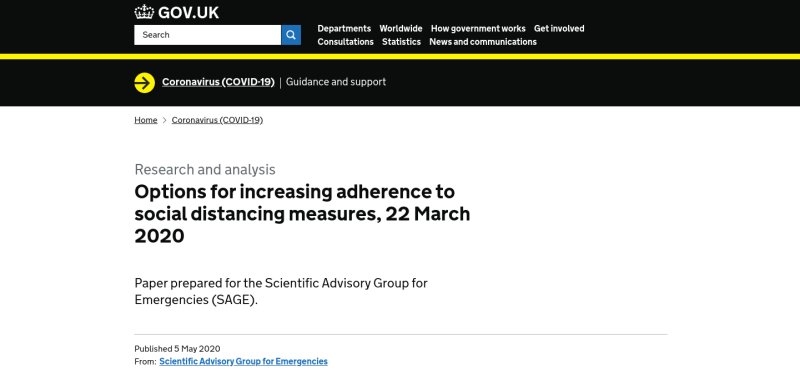
SAGE, SPI-B and applied psychology
SAGE is an advisory group to the UK government responsible for making sure decision makers have access to scientific advice. We are told that the advice provided by SAGE does not represent official government policy.
SAGE also relies on expert sub-groups for COVID-19 specific advice. These sub-groups include:
- NERVTAG: New and Emerging Respiratory Virus Threats Advisory Group
- SPI-M: Scientific Pandemic Influenza Group on Modelling
- SPI-B: Independent Scientific Pandemic Influenza Group on Behaviours
The identity of individual committee members themselves were initially kept secret, purportedly due to national security. Some names were eventually released, largely due to efforts by UK businessman Simon Dolan and his legal challenge campaign. Nevertheless, two members remain anonymous.
Psychological techniques for behavioural change
The document itself, titled Options for increasing adherence to social distancing measures, was drafted by SPI-B, the behavioural science sub-group for SAGE.
SPI-B highlighted nine broad ways of achieving behavioural change in the public:
- Education
- Persuasion
- Incentivisation
- Coercion
- Enablement
- Training
- Restriction
- Environmental restructuring
- Modelling
In the document, SPI-B focused on the methods most relevant to their stated goals and set out ten options that were evaluated on six criteria.
The six criteria, under the acronym APEASE, were:
- Acceptability
- Practicability
- Effectiveness
- Affordability
- Spill-over effects
- Equity

Government persuasion through fear
A key part of SPI-B’s behavioural change strategy that seems to have been adopted was to ‘persuade through fear.’ The Persuasion section of the document states:
A substantial number of people still do not feel sufficiently personally threatened.
Clearly, the psychologists felt that, as of late March, the public was still not afraid of COVID-19. It therefore suggested that the government increase the level of fear:
The perceived level of personal threat needs to be increased among those who are complacent, using hard-hitting emotional messaging.
Appendix B of the document lists ten options that can be used to increase social distancing in the public. Option 2 advises:
Use media to increase sense of personal threat.
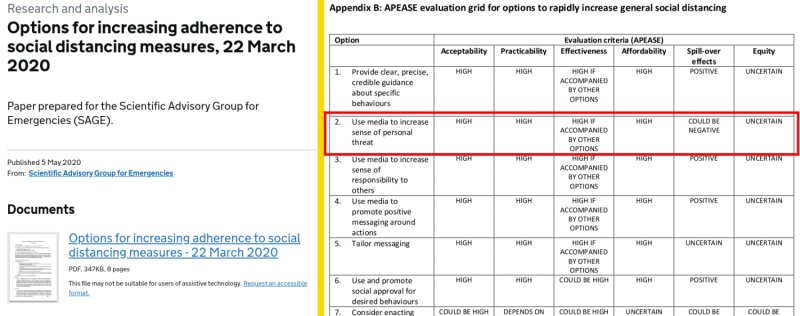
In hindsight, this explains the tone of government sponsored social media and physical billboard advertising campaigns that started appearing around April.
SPI-B recommendations to increase personal threat and use hard-hitting emotional messaging are on display with eerie imagery coupled with taglines such as:
- “Anyone can get it. Anyone can spread it.“
- “Don’t put your friends and family in danger.“
- “Stay home for your family. Don’t put their lives in danger.“
- “If you go out, you can spread it. People will die.“
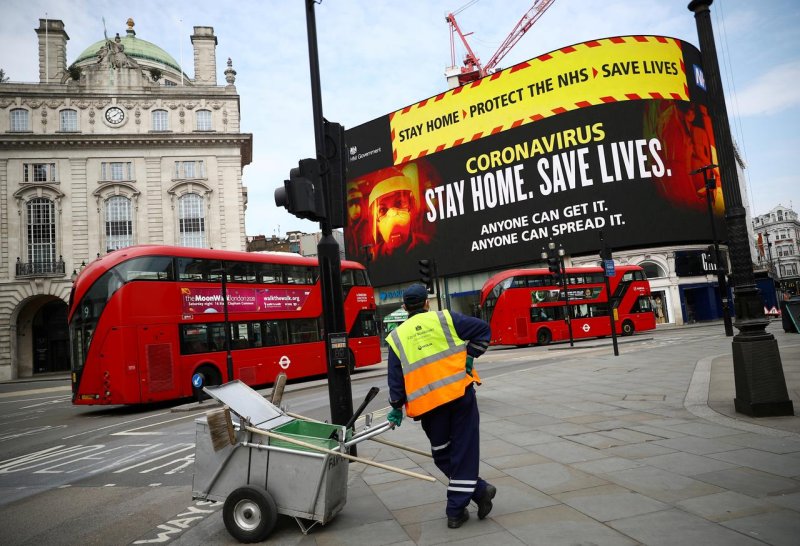

Hysterical news headlines
During the first week of April 2020, the InProportion2 project noticed a change in the BBC headlines and posted the article, BBC: Informing or scaring?
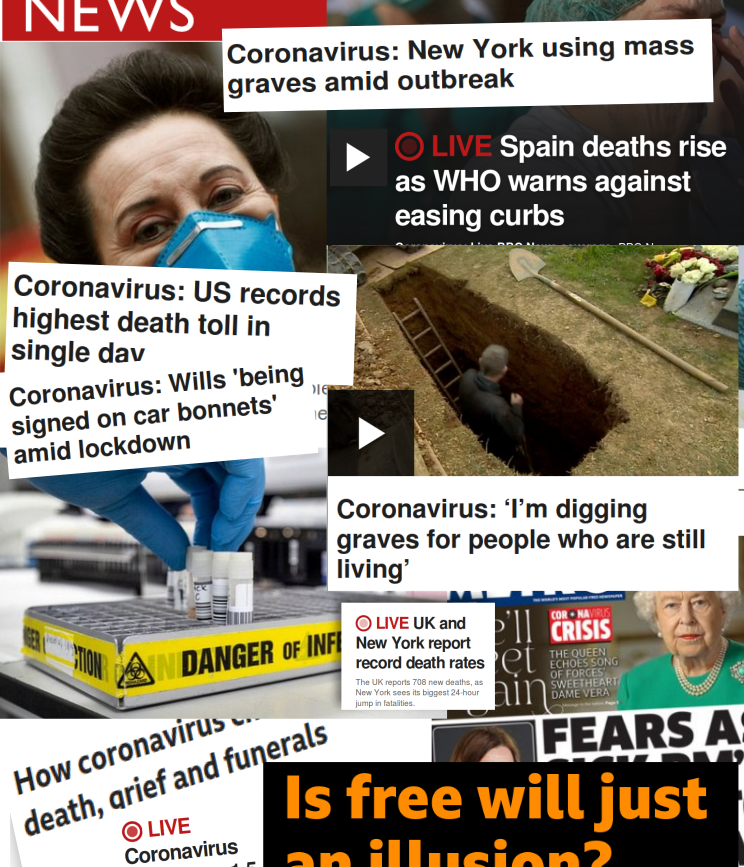
The article compared hysterical BBC news headline from the first week of April 2020 with those from 2018, when mortality rates were peaking due to a bad flu season. It found no references to flu or excess mortality on the BBC home page during the 2018 peak. InProportion2 asked, “Do the headlines reflect the gravity of the situations in an equivalent way – or is additional fear being stirred up in 2020?“
Persuasion through shame and approval: Covidiots and heroes
SPI-B psychologists knew that fear on its own would not persuade everyone. Messaging needed to be tailored to take into account different ‘motivational levers.’
Some people will be more persuaded by appeals to play by the rules, some by duty to the community, and some to personal risk.
It therefore suggested using both social approval and disapproval, with compulsion (legislation) as a backup:
- Option 6: Use and promote social approval for desired behaviours
- Option 7: Consider enacting legislation to compel required behaviours
- Option 8: Consider use of social disapproval for failure to comply
We can see the obvious approval-disapproval dialectic with the ‘Heroes and Covidiots’ narrative that soon began to surface in the news. The term ‘Covidiot’ appeared around March with The Economist’s 1843 Magazine describing covidiots in this way:
Even in a pandemic, many of us are prone to judge others and find them wanting: the term “covidiot” describes any and every person behaving stupidly or irresponsibly as the epidemic spreads. Sometime in early March the word was born, and, almost as fast as the virus spread, so did instances of covidiotic behaviour.
Although it’s not clear how the term came about, it was quickly adopted in UK mainstream and social media. At the same time, we began seeing praise for heroes who ‘did the right thing’ by complying with the government measures.
The METRO article below shows all three options in play:
- Social approval: “These local heroes have been doing amazing things…”
- Social disapproval: “Lake District closed…because covidiots won’t stay away…”
- Compulsion: “Matt Hancock threatens to close beaches…”

An incentivised media
These psychological techniques would have been impossible to deploy on the public without a compliant media. How did the government convince the media to go along with the plan?
Increased UK government media spending
Digiday, a media and marketing industry publication, reported in April that the government is becoming UK news publishers’ most important client. In the 20 April 2020 article for Digiday, Lara O’Reilly wrote:
…the government is spending more than usual, judging by their bookings. The publishers also pointed out that the lack of activity from other advertisers in the current market means the government campaigns will have an outweighed share of voice compared with normal times.
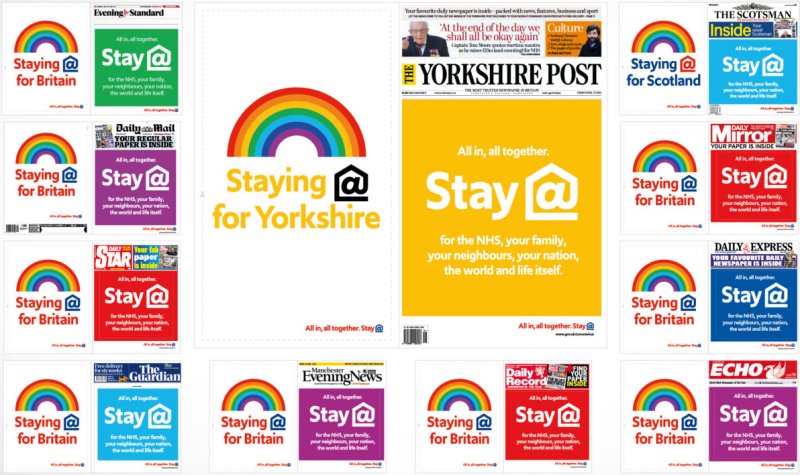
During that period, the British public started seeing coverage across media outlets with the unified “In this together” messaging. O’Reilly pointed out that the campaign was worth £35 million over a three month period.
Last week, the government and newspaper industry launched a three-month advertising partnership dubbed “All in, all together.” The campaign — worth approximately £35 million ($44 million) for the full course, according to sources — kicked off on Apr. 17, with all the U.K.’s national and regional daily news brands running near-identical cover wraps and homepage takeovers, which carried the copy, “Stay at home for the NHS, your family, your neighbours, your nation the world and life itself.”
So, we ask again: how did the government convince the media to go along with the plan? The answer is simple and obvious: with lots of money.
Psychological techniques to change behaviour
We can see that the UK Government has a public document outlining psychological techniques to change the behaviour of the population. We see a unified mass-media campaign that falls in line with these techniques. We then see a dramatic shift in public perception and behaviour.
What else can we call this but ‘brainwashing’?
Despite the open nature of what has transpired, it seems to have gained little coverage in the media. This is of no surprise since it was clearly complicit in spreading fear in the public.
Download the document
The document is freely downloadable on the gov.uk website in a page titled, “Research and analysis – Options for increasing adherence to social distancing measures, 22 March 2020“.
We encourage you to read the document, compare it with your observations about how the government and media has acted, then make up your own mind.
Updates
March 2023:
Leaked messages revealed by The Telegraph proved that Matt Hancock and other UK government ministers planned to “frighten the pants off” the public and ensure they complied with lockdown.
January 2021:
After seven months the mainstream media finally catches up. On 24th January 2021, The Express published the following article: Government accused of using Covid fear tactics to inflate anxiety levels of British public.
March 2021:
- Campaign, the world’s leading business media brand for the marketing and advertising, reported that the UK government spent more than £184m on Covid communications in 2020.
- It has emerged that German politicians, scientists and public health bureaucrats have also collaborated to induce panic to justify the first German lockdown. The source material is in German but a Twitter thread explaining the leaks in English has been archived. We will update here if an English source becomes available.
- On 18 March, the UK Government put out a tender for a £2m COVID Public Information Campaign for Northern Ireland. It is to last to years starting 1 April 2021.
- In an article for the Critic, A year of fear, Dr. Gary Sidley wrote about the role of SPI-B and The Behavioural Insights Team in bombarding the British public with fear-inducing information. Dr. Sidley is a member of the Health Advisory and Recovery Team.
April 2021:
- The mainstream media is now acknowledging the government’s psychological strategies to manipulate behaviour of the British public. On 2 April, The Telegraph published the article, State of fear: how ministers ‘used covert tactics’ to keep scared public at home.
- The UK Cabinet Office awarded £320,000,000 for COVID 19 – Media Buying Services in advertising, radio and television. The contract runs between 1st April 2021 to 31 March 2022. See our archive of UK Government COVID-19 media buying.
May 2021:
- Researcher Ian Davis reports about the ties between the UK Government and Omnicom, the New York-based corporate communications company the behind the phrases “flatten the curve”, “stay home, protect the NHS, save lives”, “rule of six” and “look into my eyes” campaigns. The UK Government has awarded Omnicom with £1.6 billion in media buy-in contracts since 2018.
- On 14th May 2020, The Telegraph published an article of SPI-B members admitting that the Use of fear to control behaviour in Covid crisis was ‘totalitarian’.
- Author, journalist, photographer and filmmaker Laura Dodsworth released her new book, A State of Fear: how the UK government weaponised fear during the Covid-19 pandemic, on 17th May 2021.
A State of Fear:
Laura Dodsworth talks about her book State of Fear on The James Delingpole Channel.